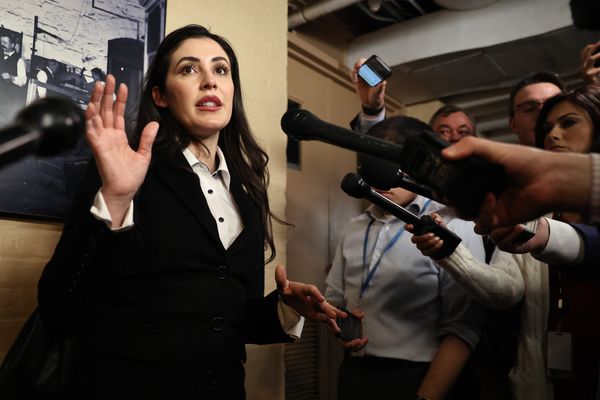SAN DIEGO — Despite low turnout in California's June primary elections, key world events such as abortion rights and the potential for war with Russia could spur greater voter participation in November, according to a voter survey by UC San Diego.
The survey, "Looking Ahead to November; How Will Reproductive Rights, Crime Rates and Top Two Dynamics Shape California's General Election?" was conducted by researchers with the Yankelovich Center for Social Science Research at UC San Diego, who asked nearly 3,000 Californians this month about their plans and preferences for the November General Election.
The survey, released Tuesday, noted low statewide turnout of about 30 percent in the June primary election. Midterm and primary elections typically have low participation rates, but this year California was well below the 2018 primary, which drew 37.5 percent turnout.
That suggests voter disengagement and apathy, the authors concluded, particularly among those not registered with a political party. Only 45.9 percent of independent voters said they will definitely vote in November, compared to 77.6 percent of Republicans and 73.4 percent of Democrats. Moreover, 11.8 percent of independent voters said they definitely won't vote, while only 3.6 percent of Republicans and 4.6 percent of Democrats don't plan on voting.
That changed, however, after the researchers asked survey respondents to read a few paragraphs of an article either about a possible U.S. abortion ban or potential war with Russia. In either case, exposure to key national or international issues galvanized survey participants, boosting those who said they planned to vote from an overall rate of 65.7 percent of respondents to 76.5 percent for those reading the article about abortion rights and 74.6 percent among those who read about war with Russia.
The group most affected was independents, whose intention to vote soared more than 20 points after reading the news stories, with 69.5 percent of those who read the abortion article and 69 percent of those who read about Russia responding afterward that they definitely planned to vote.
"This very simple exposure to a news article seemed to motivate people, especially independents," said Thad Kousser, chair of political science at UC San Diego and one of the survey's authors.
Democrats, the study found, were particularly motivated by reading about changes to abortion rights, while Republicans' voting plans were most affected by the news story about conflict with Russia.
Republicans, he said, appear motivated to take back Congress in November, but Democrats were somewhat less enthusiastic about the election.
"If they don't have something to vote for, they need something to vote against," Kousser said. "Donald Trump was that political force for Democrats to vote against. But the Supreme Court decision (on abortion rights) may provide that political force to turn Democrats out again."
The study also looked at likely candidate match-ups in the November election and concluded, unsurprisingly, that California Democrats in statewide races for governor, senator, secretary of state, controller and others with a significant advantage over their Republican opponents.
"This is the 'dog bites man' part of story: California, blue again," Kousser said.
It's noteworthy only in terms of the nationwide trend in favor of Republicans, given President Joe Biden's lackluster approval ratings hovering around 40 percent, Kousser said.
"This looks like it's going to be such a bad year for Democrats," Kousser said. "Other polls have Joe Biden polling underwater. What this shows is that the edge is in party registration. With 10 million registered Democrats to 5 million registered Republicans (in California,) there's a lot of margin of error for Democrats."
The survey also showed dramatic differences in projected election turnout based on age, race and income.
As usual, older Californians are more likely to vote than younger voters, with 79.8 percent of people over 65 saying they definitely plan to vote, and just 46.6 percent of those 18 to 24 years old determined to cast a ballot. Among White voters, 73.9 percent said they will vote in November, compared to 66.5 percent of Black voters, 63.2 percent of Latino voters and 58.6 percent of Asian voters.
"A lot of voters who were on the fence about whether to turn out are the voters who look like the future of California: younger voters, less affluent voters, voters from diverse racial and ethnic groups," Kousser said.
The starkest divide hinged on income, with 93.3 percent of voters in the highest income bracket over $150,000 per year stating that they will definitely vote in the fall. That's nearly twice the rate of people earning under $25,000, only 51.5 percent of whom said they will definitely participate in the midterm election.
While the correlation between income and voting is well-established, the size of that gap surprised researchers, Kousser said.
"The trend is nothing new, but the gradient is so sharp," Kousser said.
He said the gaps among those most likely to vote should prompt voter registrars, community groups and campaigns to step up voter education and participation efforts, and to highlight key issues that may drive people to the polls.
"Everyone's efforts to turn out more voters this year will lead to a more representative election," Kousser said.
____







